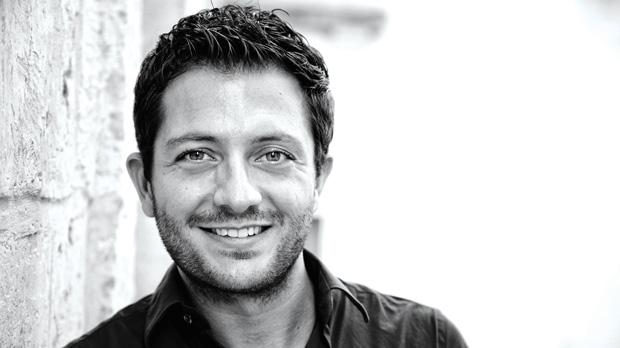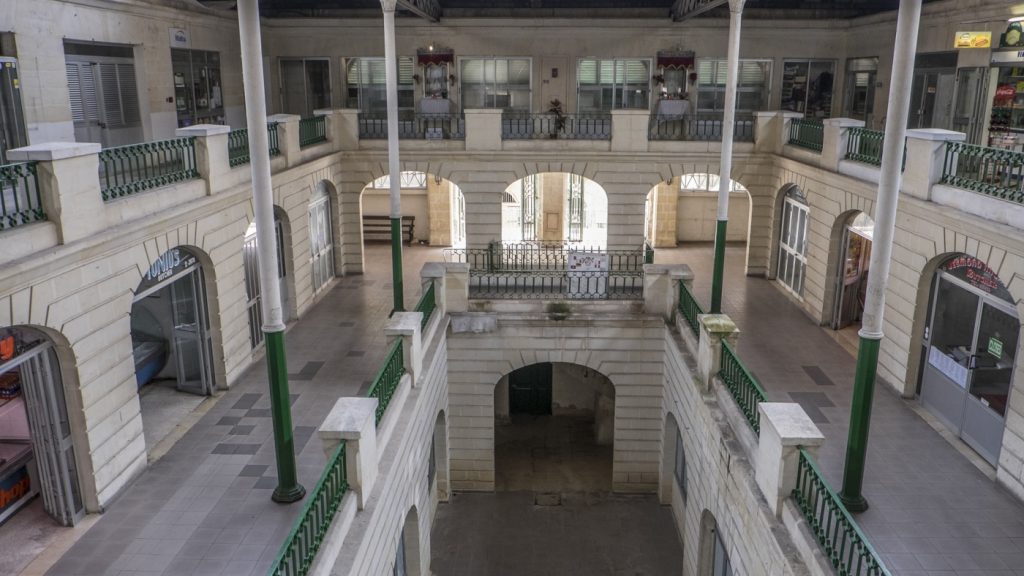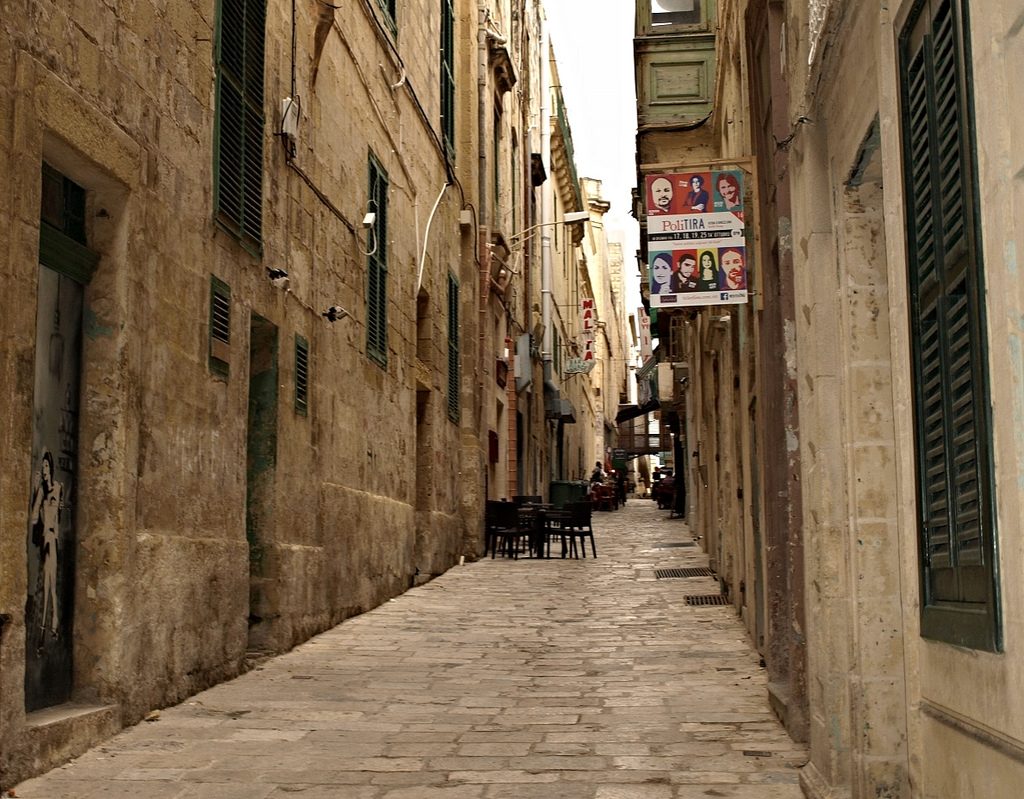It’s meant to revolutionise our cultural scene and make Malta a European cultural centre par excellence, but how will Valletta2018 affect our day-to-day lives? Here, Dr Antoine Zammit , lecturer with the Department of Spatial Planning and Infrastructure Faculty for the Built Environment, tells us how the current research he has been commisioned to carry out by the Valletta2018 Foundation, is aiming to measure the socio-spatial impact of a number of Valletta2018 projects.
 We hear the word so often that ‘Valletta2018’ has almost become a buzzword to be used in any context or as any pretext. So much so, that while almost every person in Malta will feel familiar with the term, very few people can actually explain what Valletta being the European Capital of Culture in 2018 actually means.
We hear the word so often that ‘Valletta2018’ has almost become a buzzword to be used in any context or as any pretext. So much so, that while almost every person in Malta will feel familiar with the term, very few people can actually explain what Valletta being the European Capital of Culture in 2018 actually means.
On top of the various cultural events that have been and will continue taking place all over Malta as part of the Valletta2018 initiative, the event will also leave a legacy that will give a new identity to our capital city and reshape future generations’ ideas of art and culture.
Among the various projects that will leave a huge impact on the aesthetic and ‘culture’ (by culture here we mean the ideas, customs, and social behaviour of a particular people or society) will be MUZA (Muzew Nazzjonali tal-Arti), the regeneration of Strait Street, the old Market, and the new design cluster at the old Biccerija.
Each of these already plays an important role in lives of people who live in Valletta, and their refurbishment and upgrading will completely change the areas around them – including the lives of those who have lived there for generations.
“There’s a distinction between a place being alive and being livable for residents,” explains Dr Antoine Zammit, a lecturer on Urban Design and Spatial Planning within the Faculty for the Built Environment at UoM. “If this is not controlled by the key players, which, in this case, include the Government, then the market could just take over and even lead to the gentrification of the area [property or rent could rise up so much that people who live there would be driven out].”
In order to avoid this, the
the Valletta 2018 Foundation have commissioned Dr Antoine Zammit to assess what kind of impact these projects are making on the urban space (including how they’re affecting accessibility), if there are any issues of safety (be it actual or perceived), and whether there are any current conflicts that could affect the long-term plan for these projects.
Made up of Dr Zammit, Perit Wendy Jo Mifsud and Junior Architect Constanta Dohotaru from the architectural and urban design office studjurban, the project also aims to give a better idea of how events and renovations will affect the anthropology of the city, as well as the general feeling and experience of the place. Meanwhile, other research projects being spearheaded by other researchers include looking at the effectiveness of the marketing strategy being used and the economic spinoff (if there is more employment within the cultural sector, for example). Then, every three months, all the researchers meet and update each other on what has been discovered.
“As part of our research, we’re speaking to people onsite and conducting interviews with key stakeholders involved in the conceptual development and the actual execution of the projects,” Dr Zammit continues. “This should help us gauge whether we can assess the way that they are approaching the project, as well as whether they are looking at the bigger picture and aiming for longer-term results and impacts or not.”

Old Market, Valletta
The whole project from Dr Zammit and his team’s side started last year, when they spent around 12 months analysing the state of the buildings and
created a scoring mechanism. This process will be repeated every two years to take note of any changes – changes in terms of investments in the area; spin-offs to the projects (such as new hotels opening, etc) – and how they are affecting the community.
In order to ensure that the researchers’ work influences the decisions being taken and preempts certain phenomena from occurring, Dr Zammit and the other researchers are also involved in the discussions with stakeholders and policy makers.
But, how are the researchers actually going about uncovering the way changes are affecting the community? And what exactly does socio-spatial impact really mean?
“When you have a derelict building and you put it to new use, that building may become an urban catalyst,” explains Dr Zammit. “Unfortunately many people look at it as something that, almost by default, may ‘regenerate’ a whole community. A catalyst can amplify a good situation, but regeneration does not happen with a building alone. Rather, one should invest in the neighbourhood surrounding that building.
“If a catalyst forms then it may improve a good neighbourhood and, if that catalyst closes for whatever reason, the community may still remain strong. If the focus is solely on the building, however, and that building fails, then the entire neighbourhood will suffer. That’s why this change should also be coming from the community itself, in a bottom-up manner.
“Take Strait Street, for example. Its neighbourhood consists of a residential population, so when people focus solely on enlivening it with commercial uses, they need to be very careful about what happens to that community and how that investment in the short-term could lead to dire consequences in the longer term.”
By conducting Public Participation Geographic Information System (PPGIS) in the coming months, the team behind this research plans to add new layers of information to the map of Valletta, and answer questions such as: Who is the local community and what are their needs?
“It would be an absolute tragedy if the city lost its various communities as they are the building blocks of our city – they are the ‘Beltin’. This community is anyone who lives in Valletta, be they rich or poor, Maltese or foreign. But in order to ensure this, some projects should also look at having an affordable housing strategy (as is commonplace in numerous continental European countries and the UK) lest generations of Beltin are driven out of their homes due to rising prices of property and rent spurred by the new projects taking place.”

Strait street, Valletta
Working alongside Dr Zammit are two M.Arch students in Architecture and Urban Design, Christopher Azzopardi and Daniel Attard, who are both in their final year. And it goes without saying that this exercise not only affects the projects taking shape before Valletta2018 but also gives other researchers in other areas of study new insight into the population and the dynamics of our capital.
The project is expected to run till at least 2019, thus giving researchers, stakeholders and policymakers a clearer idea of how such events truly affect the population. And while the researchers’ true impact on the project will never be able to be completely quantified, even the fact that this is taking place augurs for a brighter future.
You can be part of this fascinating world of research, too, by helping many others achieve their breakthroughs in all the faculties of the University of Malta. Please click here for more information on how to donate to research of this kind through the Research Trust (RIDT).
